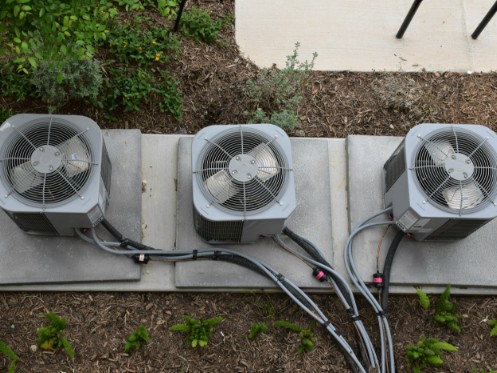The marvels of modern heating, ventilation, and air conditioning systems have made our homes and businesses comfortable spaces to spend our time. For many of us, HVAC systems have always been around in our lifetimes. They are certainly an important part of making homes comfortable in a warm place like Southern Texas. Their longevity and prevalence can make it easy to take this technology for granted. However, there was a long and intriguing journey to developing HVAC systems. This journey teaches us a lot about how they work. As HVAC experts, this history also makes us think about where these amazing systems may head in the future.
The Beginning of the Modern HVAC System
There is a long history of humans trying to control the temperature and air quality in our homes. Anthropologists have found evidence of techniques used in the Iron Age, during the time of the ancient Romans and in the Han Dynasty. Clearly, we’ve always worked to make our indoor spaces comfortable.
Nikola Tesla developed technology that created oscillating fans. This certainly helped move things along. Then, the modern HVAC system as we know it really got its start with Willis Carrier’s invention of an air conditioning system. Carrier, who was 25 years old at the time, invented an air conditioner where air moved through water-cooled coils. This same idea is something we see in today’s systems. Twenty years later, he went on to invent the centrifugal chiller. This invention revolutionized the way we control indoor climate. From there, the Buffalo Forge Company became instrumental in moving technology forward with the first fan coil dehumidifying system and the first spray-style air conditioning unit.
It was in the 1930s that General Motors really changed air conditioning. The company released a system that was self-contained and could cool a room. Eventually, this led to the development of the window air conditioning units we see today.
During this time, others made advances in indoor heating. For example, in 1918, there was a revolutionary invention with the first oil burner with an electric ignition. In 1924, Honeywell designed controls for oil burners.
While these advances were revolutionary, they weren’t common yet. In the early days, these systems were large and expensive, making them accessible only to a few. You wouldn’t go into the average person’s home in 1935 in Texas and find a window air conditioning unit. However, that day was coming.
Widespread Adoption in Homes and Businesses
Surprisingly, we may have Paramount Pictures to thank for the widespread adoption of air conditioning today. As mentioned above, Willis Carrier created a cooling system. In 1925, he worked with Paramount Pictures to put a system into a theater in New York City, a place that is often very warm, very humid, and very crowded. The company soon realized that people loved this. The air conditioning was a great reason to go to the movies. So, they put their systems in 300 more theaters. From the 1930s on, this technology saw a boom in popularity. Companies like General Electric, General Motors and Frigidaire got into the AC business.
In the northeast United States, particularly in the Pennsylvania and New York areas, HVAC systems became a high-ticket item in wealthy homes during the 1950s. Construction workers planned for HVAC systems in new homes and commercial buildings. The post-war era brought about an economic boom. This increased demand for HVAC systems as people sought more comfortable living and working environments.
As these systems evolved, they became more energy-efficient quieter, and capable of providing precise temperature control. By the 1970s, thanks to technological advancements and increased affordability, the rising awareness of the importance of indoor air quality led to even broader adoption.
HVAC Systems Today
While HVAC systems are widespread across the United States, there are still areas where they are less common. In some northern states, like in the Pacific Northwest where the climate is characterized by milder summers and colder winters, homeowners often rely on furnaces and wood-burning stoves for their heating needs. Homes and businesses there without AC units are still common. Additionally, in regions with lower population densities or where economic constraints prevail, the adoption of HVAC systems remains slow.
In Texas, where temperatures can be extreme, HVAC systems are indispensable. They create comfortable environments year-round. As technology advances further, we can expect even more energy-efficient and environmentally friendly HVAC solutions to meet our ever-growing needs.
Trust Experienced Pros With Your HVAC Systems
If you’re seeking professional HVAC services in South Central Texas, GVEC Air Conditioning & Heating is here to assist you. We provide service in homes and commercial buildings in the wider area, including La Vernia, Cuero, Seguin, Gonzales, Schertz, New Braunfels and more. We specialize in providing advanced heating and cooling solutions. We tailor our services to the needs of your building and lifestyle to ensure your comfort, no matter the weather conditions. We offer emergency repair services, too.
We also offer regular maintenance for HVAC systems to help keep your unit running efficiently and prevent repair issues from ballooning. Additionally, we can help you with ductwork replacement and air conditioning installation, or we can help improve your indoor air quality with air purifiers. Contact GVEC Air Conditioning & Heating today to learn more.



